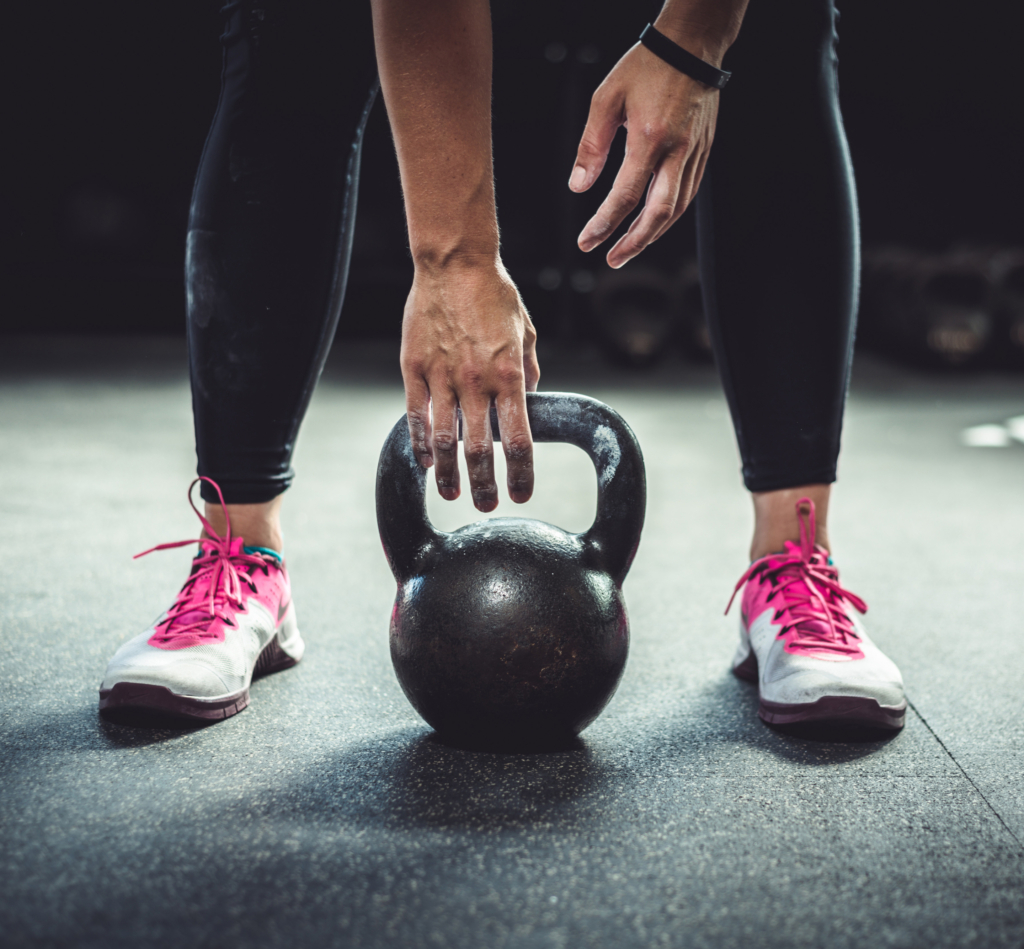Table of Contents
Why These Four Lifts Matter for Every Client
In kettlebell training, there are dozens of movements, but only a handful that form the true foundation. The clean, press, squat, and snatch are those essentials. When clients master these four lifts, they gain access to safer, stronger, and more effective training. These lifts not only build strength and conditioning, they also reinforce universal skills like bracing, breathing, and stabilizing under load.
For personal trainers, teaching these exercises correctly ensures clients learn how to hinge, brace, breathe, and stabilize under load. These skills carry over into everything from athletic performance to everyday strength.
AFPA’s Kettlebell Essentials: The Iron Cardio Approach course is taught by Brett Jones, one of the world’s most respected kettlebell authorities. As the Director of Education for StrongFirst, Brett has spent more than two decades teaching coaches and clinicians around the globe. His work has shaped the modern approach to kettlebell training. With Brett, every rep is not just exercise—it is skill practice, refinement, and resilience-building.
The Kettlebell Clean
The kettlebell clean is the entry point to nearly every other kettlebell movement. It teaches clients how to safely bring the bell from the floor into the rack position, where it can be pressed, squatted, or transitioned into advanced lifts like the jerk or snatch. Without a reliable clean, the rest of a client’s kettlebell training will be built on shaky ground, because the rack position determines both safety and strength. Brett often reminds his students, “Your press will only be as good as your clean,” and that principle extends to nearly everything in kettlebell training.
Coaching Cues:
- Lock and rock stance: Let the hips determine the natural foot position to spare the back.
- Hinge first, not torso first: Initiate the clean by pushing the hips back and driving the feet through the floor.
- Earth downs, not pickups: Instead of lifting the bell, push your energy into the ground so the bell floats into place.
- Rack it right: Elbow tucked, wrist straight, bell resting softly against the forearm.
Variations:
- Single-arm clean
- Double kettlebell clean
- Kettlebell squat clean
- Kettlebell power clean
The Kettlebell Press
The kettlebell press builds overhead strength, stability, and alignment, making it one of the most rewarding skills a client can learn. Moving a bell overhead challenges posture, breathing, and balance in ways that few other lifts can match. It develops not only the shoulders and arms but also the trunk and legs, because the entire body must stay braced and stable. Brett is known for saying that “the secret to happiness is putting a heavy weight overhead,” because pressing creates that victorious sense of mastery and confidence.
Coaching Cues:
- Stack the joints: Bicep by the ear, bell over shoulder and hip.
- Press through the ground: Think of driving yourself into the floor rather than just moving the bell upward.
- Avoid shrugging: Focus on scapular upward rotation, not elevation.
- Breathe with purpose: Use a diaphragmatic sniff before each press for optimal stability.
Variations:
- Kettlebell shoulder press
- Double kettlebell press
- Bottoms-up press
- Kettlebell floor press
Beginner-Friendly, 101-Level Kettlebell Training
Learn directly from Brett Jones, a top strength coach, and walk away ready to integrate kettlebells into any fitness routine with confidence.
The Kettlebell Squat
The squat is one of the most important human movement patterns, and kettlebells offer a practical, scalable way to teach it. For beginners, holding the kettlebell in a goblet position allows them to sit deeper while staying balanced, often unlocking mobility they did not know they had. For more advanced clients, front squats with double kettlebells challenge bracing and stability under load, while variations like split squats build single-leg strength. Regardless of the version, the kettlebell squat teaches control, stability, and confidence with a load, making it a cornerstone of client programming.
Coaching Cues:
- Ankle mobility: Allows the knee and hip the space to drop down into the squat versus gliding body position forward.
- Stay tall: Avoid lumbar rounding by respecting each client’s unique hip anatomy.
- Brace with breath: Sniff at the top, brace, exhale while standing tall.
Variations:
- Goblet squat
- Kettlebell front squat
- Kettlebell sumo squat
- Bulgarian split squat
- Kettlebell squat press
The Kettlebell Snatch
The kettlebell snatch is often described as the most advanced of the big four lifts, and for good reason. It requires power, timing, coordination, and endurance all in a single motion, taking the bell from the ground to overhead in one fluid path. When done well, the snatch builds explosive hip drive, overhead stability, and conditioning, while also demanding skill and precision. Brett emphasizes that the snatch is not simply a swing gone higher, but “a clean that finishes overhead,” and that distinction makes all the difference for safety and performance.
Coaching Cues:
- Keep the path tight: Prevent the bell from swinging too far out.
- Protect the hands: Grip deep in the palm to safeguard calluses.
- Absorb the drop: Guide the bell down with the hips, almost like giving a low five.
- Breathe with the hips: Match exhalation with hip extension.
Variations:
- One-arm kettlebell snatch
- Double kettlebell snatch
- Half snatch
- Snatch test prep
Programming the Big Four Together
What sets Brett’s approach apart is not just how he teaches the lifts, but how he programs them. In the Iron Cardio method, the clean, press, squat, and sometimes snatch are practiced in short, sustainable sequences. A typical session might look like this: clean, press, squat, set the bell down, shake it off, then repeat. Each rep is treated as skill practice, not as a race to fatigue. Over time, this practice builds strength, conditioning, and resilience without burning clients out.
Programming Methods:
- Rep ladders (1–2–3 and back down)
- Traveling twos
- Sliding singles
- Classic plus snatch for added intensity
This is the programming mastery that has made Brett’s Iron Cardio protocols a reference point in the kettlebell world.
Learn from the Best to Teach like the Best
The kettlebell clean, press, squat, and snatch are more than four exercises. They are the building blocks of safe and effective kettlebell training. Trainers who master these lifts and teach them using the right cues set their clients up for success not just in workouts but in life.
Learning these movements directly from Brett Jones, Director of Education at StrongFirst and one of the foremost kettlebell educators in the world, is an opportunity to study with someone who has influenced how kettlebell training is taught globally. His ability to blend clinical knowledge with practical coaching makes his instruction invaluable.
AFPA’s Kettlebell Essentials: The Iron Cardio Approach provides trainers with Brett’s proven cues, progressions, and programming tools. For fitness professionals looking to elevate their coaching, this course is a chance to learn directly from one of the most influential voices in modern strength training.

The Essential Kettlebell Course—Learn It, Use It, Coach It
Master kettlebell fundamentals and the Iron Cardio method, a proven system for building strength, endurance, and control, in as little as a weekend.

Reviewed by
Diane Vives, M.S.
Senior Director, Health & Wellness Professional Education


